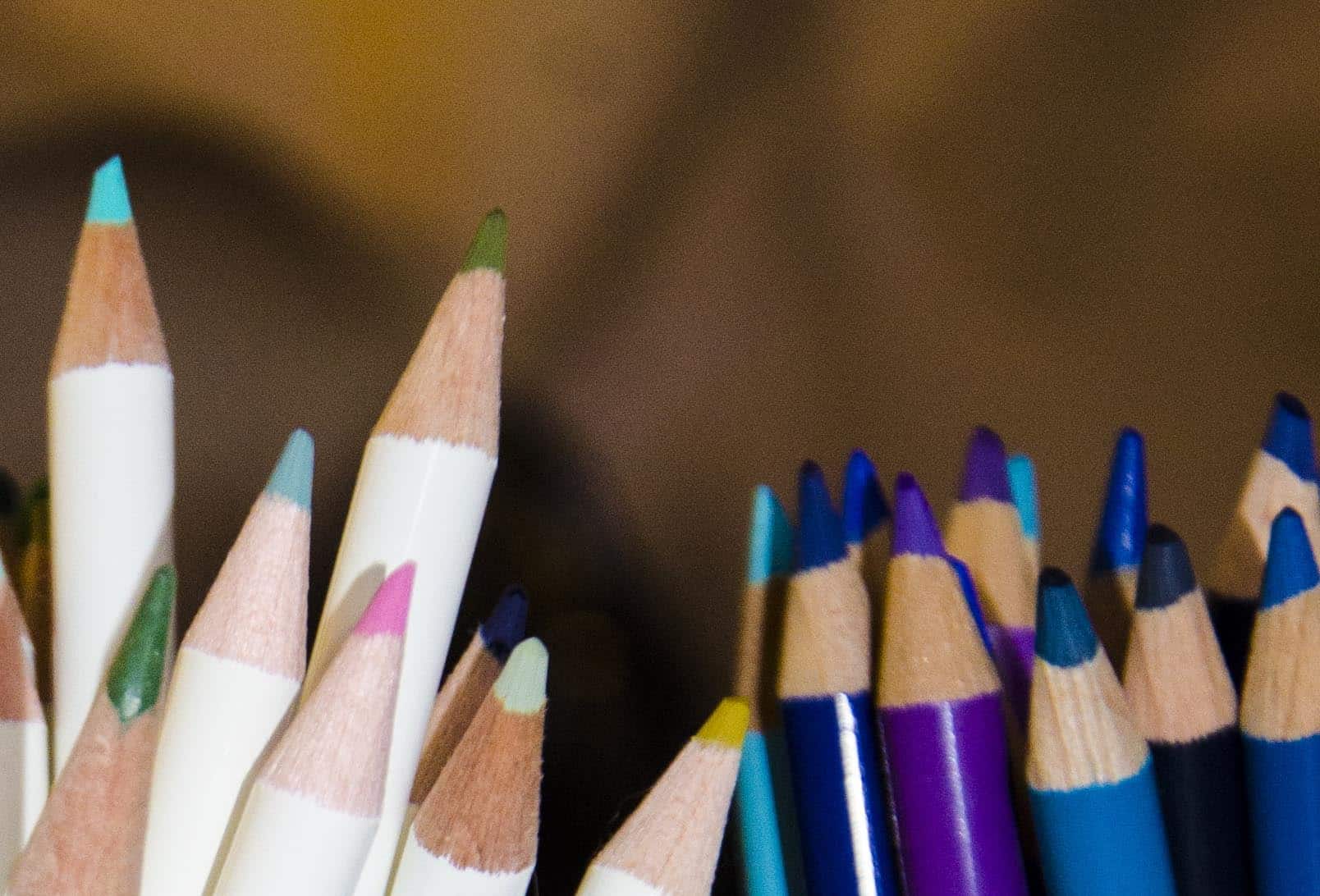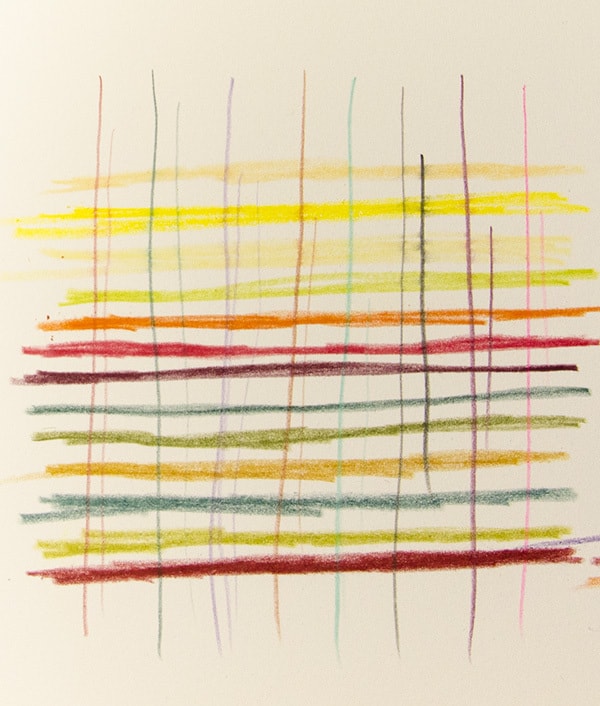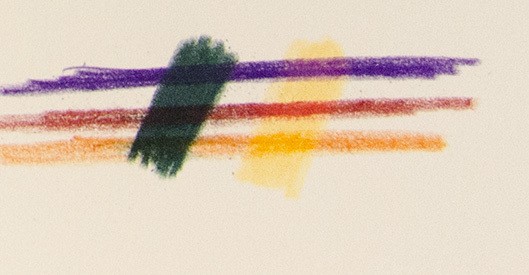Blog
The Art of Pencil Crayon Painting 8

I made a few charts with Irojiten pencil crayons to see how they would perform in transparency and coverage. I used Arches rag paper this time, a hot press with a modest amount of tooth. I was very mad at this paper last summer as I started a large picture and abandoned it after completing about a quarter of it. The paper has a tendency to grab pigment from the pencil crayons in little dots when you are doing light shading. It gives the work a pixilated look like old cartoon colour printing. So, I am using this sheet to experiment on (take that you rotten paper that failed to measure up to my expectations!).
First, as you will note below, many of the pigments allow show through of the lighter and darker vertical bars. Even though the pigments are rich, they allow the underlying colours to show through very well.

On this second chart, many of the darker pencil crayon colours do not cover the lighter ones. The lighter pencil crayon bars are laid solidly in a single colour. The cross bar pigments adhere very little to the surface of these lighter colours, although they do not all behave this way. On the bottom bar, you can see the crimson actually enhancing the first bar and providing a complementary mix on the green. In this case the top colour was shaded in. The effect is that if you wish to keep a section of the picture light in colour, it will resist taking on pigment if you lay the colour in deeply and shade over it lightly. When working it allows you to shade in a surrounding area without having to worry about messing up the lighter areas.

In this last experiment, the dark green does take layers, suggesting that the Canson paper with little tooth was part of the problem noted in the previous blog. The underlying lighter colour blends beautifully with the transparent colours, and with nice even coverage. So, even when the undercolour is light, you can still get a good second layer of colour for blending effects.
